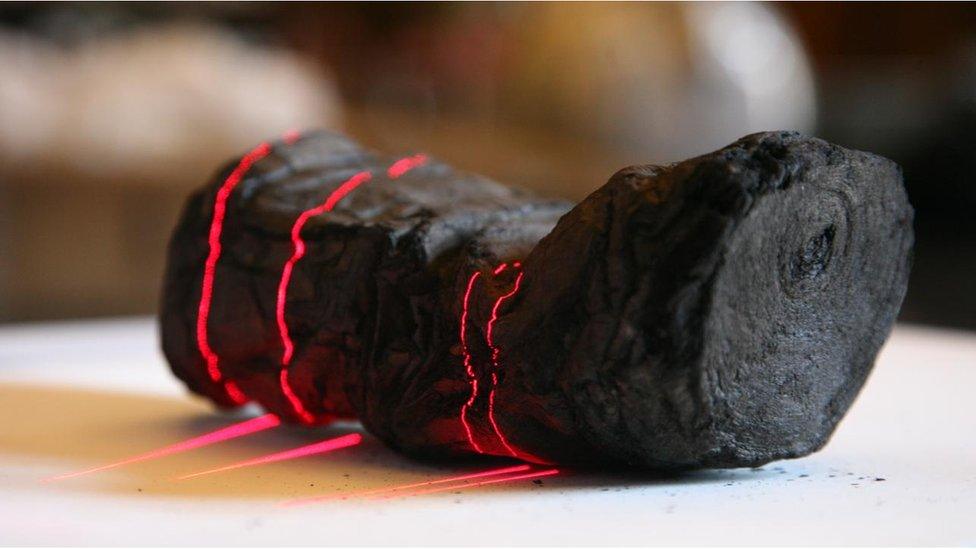Artificial intelligence helps to read ancient burned scroll
- Published
- comments

A 3D x-ray was taken of the burned scroll to create a process called 'virtual unwrapping'
Artificial intelligence (AI) is used for a whole host things in modern day life from creating cool images to operating driverless cars.
And now computer scientists from the University of Kentucky have used to tech to read an ancient scroll that was burned in a volcanic eruption nearly two thousand years ago.
The papyrus scrolls, which are still rolled up, were essentially turned into charcoal when Mount Vesuvius erupted and reached the Roman town of Herculaneum in 79AD.
But despite historians thinking we would never know what was written on that paper, the first word - purple - has been found.
The letters spell out the word 'purple' in Ancient Greek
The scrolls are so fragile that if you were to try and unroll them, they would turn to dust and that's why no one has been able to read anything from them until now.
The discovery came about after a competition called the Vesuvius Challenge was launched back in March.
Thousands of 3D X-ray images of two rolled up scrolls and three fragments of papyrus were released as well as AI programmes that could be used to help decipher the ancient Greek writing.
A $40,000 prize was awarded to 21-year-old computer scientist, Luke Farritor, for finding those first letters.
A piece of Herculaneum scroll
There are more cash prizes on offer for researchers who manage to extract words from the scrolls which were taken from the library of a luxury villa that was buried in the Roman town all those years ago.
More words are being found by researchers around the world, and the race is on to read as much of the scroll as possible.
It's still a mystery as to what will be in these scrolls but thanks to advances in technology, experts are closer than ever to finding out.
- Published30 September 2023
- Published27 September 2023
- Published16 September 2023
